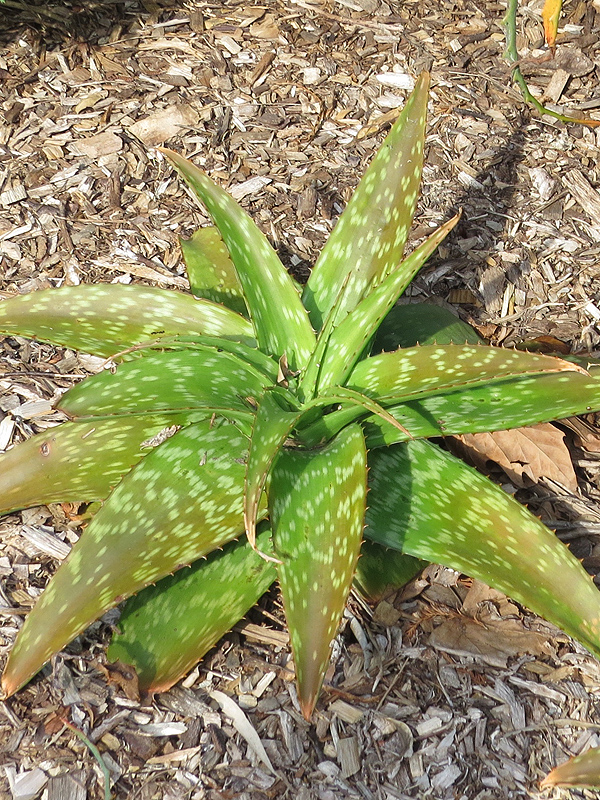
Tropicals > Aloe > Aloe nyeriensis > Aloe nyeriensis
Aloe nyeriensis
Aloe
Origin: East tropical Africa to central Kenya.
| Family |
| Asphodelaceae |
| Genus |
| Aloe |
| Species |
| nyeriensis |
| Category |
| Tropicals |
| Synonyms |
| Aloe ngobitensis |
| Canadian Hardiness Zone |
| Cool season protection under glass. |
| Height |
| 1 - 3 m |
Photographs
Description and Growing Information
Flowering Period
| Landscape |
| Ornamental use. |
| Cultivation |
| Full sun and partial-shade. Drought resistant. Sandy, well-drained soil. |
| Shape |
| Branching and shrubby. |
| Growth |
| Medium |
| Habitat |
| Bushland and on lean rocky soils. |
| Leaf Description |
| Leaves have spots on young plants with teeth 3 mm long and 10 mm apart. Erect stems that branch near the base. |
| Flower Description |
| Inflorescence 60 cm, racemes are cylindrical and flowers scarlet. |
| Colour Description |
| The leaves are a greyish-green colour. |
| Notable Specimens |
| Kings Park and Botanical Garden, Perth, Australia. |
| Propagation |
| Seed. Germination takes about 3 weeks. Cover seeds with a thin layer of sand (1 - 2mm) and keep moist. Seedlings can be planted in individual pots or containers as soon as they are large enough. |
| Ethnobotanical Uses (Disclaimer) |
| The crushed leaves may be used as a facial scrub to cleanse skin, reduce pimples and skin blemishes since the leaf exudate contains aloin A (barbaloin) and homonataloin. |
